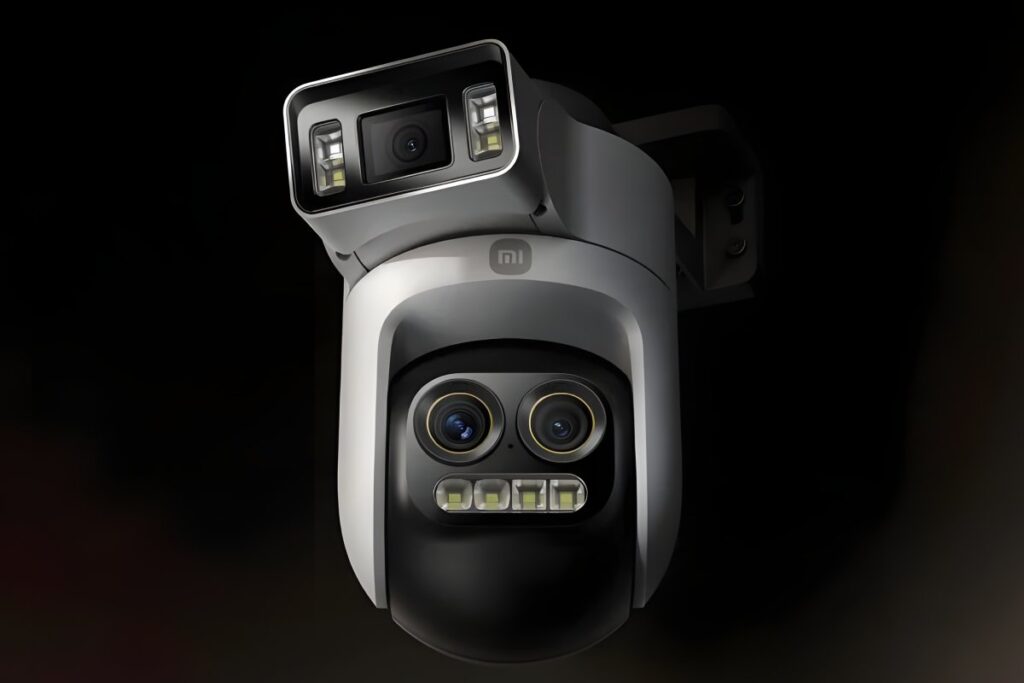Imagine drones that map disaster areas today and identify military targets tomorrow. Or seismic activity sensors designed for construction that are then used to track submarines underwater. These ideas represent the promise of dual-use technologies that serve both civilian and military objectives. For the first time, the European Commission has explicitly proposed funding these technologies through programs like Horizon Europe. But as we rush to embrace dual-use technologies, we face a fundamental choice: do we continue the old model where military applications drive innovation and civilians adopt it later, or do we completely flip this paradigm? This article explores the benefits of a “civilian-first” approach to developing dual-use technologies, arguing how this path can lead to more robust and beneficial solutions for all sectors.

The Traditional Model: Military-Driven Innovation and Lessons from the Past
For decades, technological innovation has followed a well-trodden path: the military drives development, and civilian applications emerge as a secondary outcome. One of the most successful dual-use technologies in history is the Global Positioning System (GPS). Developed by the U.S. Department of Defense in the 1970s, it was fundamentally designed for military positioning and navigation. Civilian access was restricted by a feature called “Selective Availability,” which intentionally reduced accuracy to maintain military superiority. This limitation hindered the full potential of GPS for years.
The full potential of GPS was not realized until 2000, when “Selective Availability” was deactivated. With this action, GPS accuracy for civilian users immediately increased tenfold. The technology quickly became a tool most of us rely on daily, sparking innovations that revolutionized industries from agriculture to transportation. A 2019 study by the National Institute of Standards and Technology (NIST) estimated that GPS generated $1.4 trillion in economic benefits. These figures demonstrate the profound impact of technologies that, once liberated, enter the broader civilian market.
The military-driven approach, as seen with GPS, has dominated innovation budgeting for decades. However, there is compelling evidence that civilian-first approaches to dual-use technologies both better meet the immediate needs of society and ultimately yield more robust solutions for all applications—including military ones. This shift in perspective is crucial, as it indicates that relying solely on military needs can hinder larger and broader advancements.
Indeed, history has shown that innovations designed primarily to address broad and diverse civilian needs often gain greater flexibility and adaptability. These technologies naturally improve and optimize over time through widespread use in various environments, a process that inherently leads to enhanced efficiency and reliability for military applications as well. This is a positive feedback loop where civilian use is the primary driver of progress.
Advantages of the “Civilian-First” Approach: Market Scale and Agility
The traditional model overlooks a crucial reality: civilian markets provide both the scale and variety of applications that drive innovation in ways the more specialized military sector cannot match. This pattern is replicated across various technological domains. Internet protocols, developed for military communications, found their greatest evolution in civilian applications before returning to enhance military systems. The commercial drone industry has accelerated aerial innovation far beyond what purely military procurement could achieve. This means widespread civilian use, with continuous feedback and optimization, contributes to faster technology maturation.
By focusing on civilian-first use cases, innovation can benefit from larger markets, more diverse applications, and faster development cycles. When technologies are developed with broad civilian applications in mind, they benefit from economies of scale that purely military development cannot achieve. This leads to reduced costs, wider accessibility, and ultimately faster adoption and continuous improvement. Civilian markets are a powerful driving force for innovation that should not be underestimated.
This is partly because civilian innovation faces fewer bureaucratic constraints. Military procurement cycles can take years or even decades, whereas civilian markets reward agility and rapid iteration. Developing for civilian use first allows technologies to evolve and mature faster than might be possible on traditional defense procurement timelines. This difference in speed enables civilian technologies to lead the way and then supply military needs with proven, efficient solutions.
Furthermore, the high diversity of needs and application scenarios in the civilian sector provides developers with the opportunity to test and optimize their technologies under various conditions and for diverse purposes. This process of rapid iteration and continuous feedback not only helps increase efficiency and reliability but also leads to the discovery of new applications that might not have been initially conceived. This flexibility and dynamism in the civilian market will ultimately benefit the military sector as well, as they can leverage mature and proven technologies.
Addressing Foundational Technical Challenges and Attracting Talent
The most promising dual-use advancements stem from addressing foundational technical challenges rather than specific operational functions. When innovators focus solely on military operations, they often miss the broader potential of their technologies. Scientific potential is not abstract; it only becomes reality through implementation. For example, the development of robust navigation systems that operate without GPS is an excellent illustration of this approach. A solution that enables delivery drones to reliably navigate urban environments can revolutionize logistics while simultaneously providing critical capabilities for defense operations.
By emphasizing civilian applications while also considering potential military uses, we create space for innovations that might otherwise never have been possible. This symbiosis between the two sectors allows technologies to develop in a more comprehensive and practical manner. An approach that solely considers military needs might overlook the creative potential and collateral innovations that emerge from broader civilian requirements.
European Commission research on introducing a military technology aspect to the successor of the Horizon Europe program indicated that academic and research institutions prefer to stick to the status quo and keep European R&D funding purely for civilian technologies. By providing funding pathways that respect these preferences, we expand the talent pool and address critical technological challenges. Given the financial and political pressures in U.S. higher education, Europe can attract top innovators from across the Atlantic by creating an environment aligned with their core values. This means an open, innovation-focused environment for everyone, not just for military objectives.
Furthermore, focusing on solving real and widespread civilian problems often leads to solutions that are superior in terms of sustainability and practicality. Due to the need to adapt to complex environments and diverse users, these solutions are developed from the outset with robustness, ease of use, and cost-effectiveness in mind. These characteristics are also vital for military applications, where reliability in harsh conditions is a significant advantage.
Building Bridges for a Dual-Use Future
As Europe intensifies its focus on strategic autonomy and technological sovereignty, dual-use technologies will play an increasingly important role. Recent EU actions to allow dual-use funding through programs like Horizon Europe signify a crucial shift in how we approach innovation. But as these initiatives take shape, they must avoid merely replicating the traditional military-driven model. The goal should be to create a dynamic ecosystem where innovation is fueled from both directions, civilian and military.
By prioritizing civilian use cases while recognizing military applications, we can leverage market forces, attract diverse talent, and produce more robust technologies for all applications. This approach ensures that technologies are not only effective in the military domain but also useful in everyday life, gaining continuous improvement and greater sustainability through wider adoption. This is a smart investment in a future where security and societal progress move hand in hand.
However, for dual-use development to be truly sustainable, civilian and military technologies must no longer reside in silos—we must bridge the gap between civilian-first R&D and military use cases. Given the existing disconnect in how these two sectors operate, this will require a proactive process. Initiating more open knowledge exchange will better leverage insights and learnings from both worlds. For entities focused on military technology, it is time to cultivate a civilian equivalent. Conversely, organizations like SPRIND, Germany’s Federal Agency for Disruptive Innovation—which focuses on civilian technology—should also explore military applications. This is a two-way approach to ensure synergy and maximum utility.
This synergy can be achieved through joint R&D programs, knowledge exchange workshops, and even the formation of interdisciplinary teams comprising experts from both fields. The ultimate goal is to foster a culture of innovation where artificial boundaries between military and civilian applications dissolve, and the best ideas, regardless of their origin, have the opportunity to grow and develop.
A Shared Future: The Convergence of Civilian and Military Innovation
The challenges we face—from climate change and energy security to supply chain resilience—demand technological solutions that serve multiple objectives. The old dichotomy between civilian and military innovation is increasingly obsolete in a world where the most powerful technologies inevitably serve both domains. These two areas can no longer be considered entirely separate; progress in one inevitably impacts the other, and vice versa.
In this new era, the convergence of innovations is inevitable. Tomorrow’s transformative dual-use technologies are much closer than we think – if we focus on civilian use cases today. With this approach, we not only address society’s immediate needs but also create a platform for developing more advanced and resilient technologies that can also be employed for defense purposes when required. This is a win-win strategy that contributes to both societal progress and national security. This comprehensive perspective is key to success in the new age of rapid, multifaceted innovations.
Ultimately, adopting a “civilian-first” approach to dual-use innovation not only helps strengthen national security but also leads to the creation of more robust innovation ecosystems, more resilient economies, and a society better equipped to respond to global challenges. This is a path that guides us toward a safer and more prosperous future, where technology serves humanity in the best possible way.
Source: The Next Web




